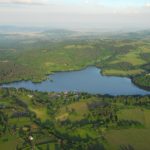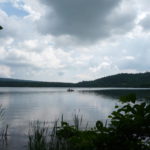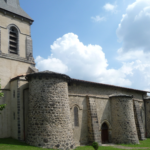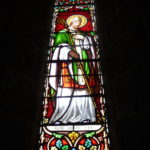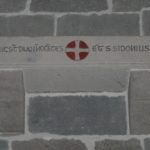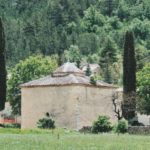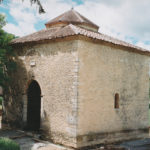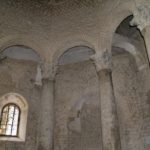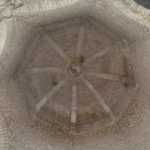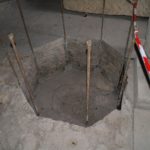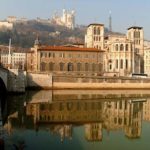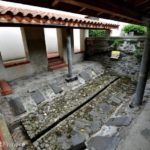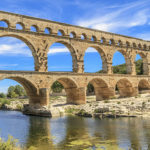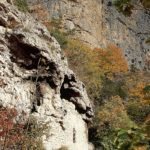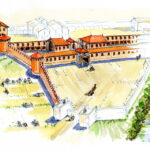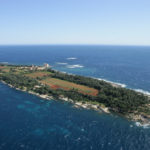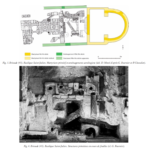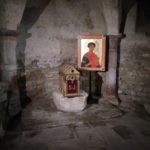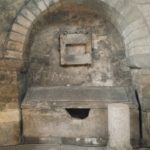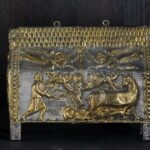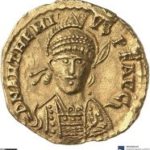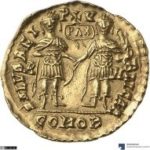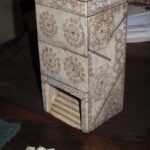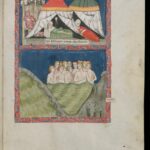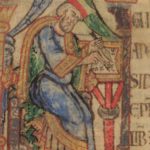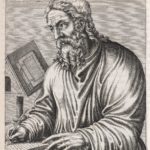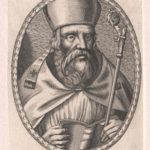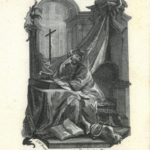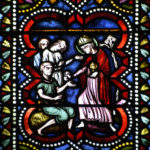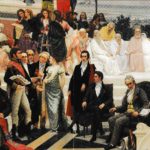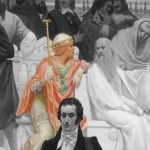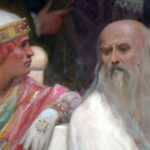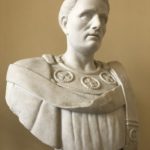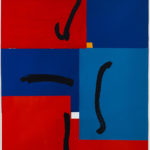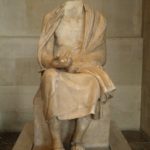Gallery
Click pictures to enlarge
Aydat
Lake Aydat from the air. Sidonius’ estate Avitacum was on the lake’s shore.
© 2008 Alain Pons
The lake in June 2009
Photo Joop van Waarden
Saint Sidoine church, Aydat (13th c., fortified 15th c., belltower 19th c.)
Photo Joop van Waarden
Saint Sidonius window in the church (1867)
Photo Joop van Waarden
HIC SUNT DUO INNOCENTES EST SANCTUS SIDONIUS Here are (the relics of) two infants and (of) Saint Sidonius
Photo Joop van Waarden
Baptistery in Reii (modern Riez). 12th century. This could be the place where Sidonius was baptized by bishop Faustus (Carm. 16.78-90).*
Photo Loek van Arem
Baptistery in Riez
Photo Loek van Arem
Baptistery in Riez, interior: rotunda
Baptistery in Riez, interior: cupola
Baptistery in Riez, interior: baptismal font (4th/5th century)
Panorama of the Fourvière hill in Lyon. In the foreground to the right the primatial church of Saint-Jean-Baptiste on the bank of the Saône, where bishop Patiens built (or renovated) the predecessor cathedral for which Sidonius composed a verse inscription (Carm. 27 in Ep. 2.10.4). Close by was the funerary church of St Just, the place for the relaxed saint’s day described in Ep. 5.17.
Possible traces of the well in St Abraham’s monastery in the courtyard of Saint-Cirgues apartment building in Clermont-Ferrand. See Sidon. Ep. 7.17.
Source LaMontagne.fr
The Pont du Gard. Sidonius’ uncles Ferreolus and Apollinaris owned estates on opposite banks of the river Gard. Sidonius describes his visit to them in Ep. 2.9.
The Saint-Maurin grottos in the Gorges du Verdon, allegedly home to hermits and to Faustus of Riez in particular (Sidon. Carm. 16.92-94)
Source Wikipedia
Reconstruction of the Visigothic palace at Toulouse
© Christian Darles and Musée Saint-Raymond
Île Saint-Honorat, the southernmost island of the Lérins group off Cannes. Here, ca. 410, Honoratus founded the monastery whose policy and spirituality were to be a decisive factor in the Gaul of the likes of Sidonius
Source Abbaye de Lérins
Saint-Julien, Brioude (ancient Brivas). Excavations
Source D. Martinez and D. Morel, ‘L’architecture religieuse de l’Auvergne’ (2012)
Saint-Julien, Brioude. The saint’s shrine in the crypt of the present-day church. For the controversy concerning his relics, see Sidon. Ep. 7.1.7.
Photo Joop van Waarden
The sarcophagus of bishop Mamertus of Vienne (see Ep. 7.1) in Saint-Pierre church, the archaeological museum of Vienne.
Photo Joop van Waarden
Toulouse, Basilique Saint-Sernin, reliquary of Saint Saturninus (12-13th cent.), depicting his martyrium drawn by a bull (Sidon. Carm. 41.65-76).
Emperor Anthemius 467-472 CE, Solidus Rome (obverse)
Source Münster University, Münze des Monats, October 2018
Emperor Anthemius 467-472 CE, Solidus Rome (reverse)
Source Münster University, Münze des Monats, October 2018, where see for the meaning of PAX
Sidonius in Ms. Plut. 45.26, f. 1r, Florence, Biblioteca Medicea Laurenziana
Portrait of Sidonius in André Thevet’s 1584 Vrais Pourtraits et Vies des Hommes Illustres.
See Reception/France page
Portrait of St Sollius Sidonius in the Austrian National Library, inv. PORT_00082645_01. Probably by Balthasar Moncornet, c. 1650
Source Bildarchiv Austria
Wolfgang Baumgartner (1702-1761), engraving Sidonius Apollinaris in Die tägliche Erbauung eines wahren Christen
See Reception/Germany page
Saint Sidoine Apollinaire taking care of the poor on a 1886 stained glass window in the cathedral of Clermont-Ferrand which represents the bishops of this town, executed by the glazier Félix Gaudin.
© 2009 Henri Hours
Sidonius as bishop among the ‘Gloires du Lyonnais et du Beaujolais’ in the Assembly Room of the Hôtel du Département du Rhône in Lyon. He is seen, wearing a bishop’s hat with a staff in his hand, talking to Ambrose in the centre of the middle tier. The artist is the painter Louis-Edouard Paul Fournier (1857-1913).
Source: leaflet Département du Rhône
Detail
Source: Direction de la Communication et du Protocole, Département du Rhône
Detail
Source: Direction de la Communication et du Protocole, Département du Rhône
Bust of Sidonius, one of thirty-four famous Lyonnais who adorn the corridors of the Hôtel du Département du Rhône in Lyon. The artist is the sculptor Joseph Bourgeot (1851-1910).
Source: Direction de la Communication et du Protocole, Département du Rhône
Statue of a seated old man, presumably Chrysippus, in the Louvre. Sidonius Ep. 9.9.14: ‘Chrysippus with his fingers bent to denote counting’
Photo 2012 Carole Raddato, Flickr
Footnote
* For a description of this baptistery, see Jean Guyon in Noël Duval et al., La topographie chrétienne des cités de la Gaule. Des origines à la fin du VIIe siècle. Choix de notices, Fasc. 1, Paris 1980: 108-109 [typoscript]. On pp. 113-114, a discussion (inconclusive) of the rival interpretations of Carm. 16.83-84: visit by Sidonius to Faustus’ mother (Tillemont); Faustus making Sidonius a member of the church by baptism (Loyen) or by having him take holy orders (Krusch); Sidonius entering Faustus’ church (Solomé) or a nunnery where Faustus’ mother lived (Griffe, Prinz).

